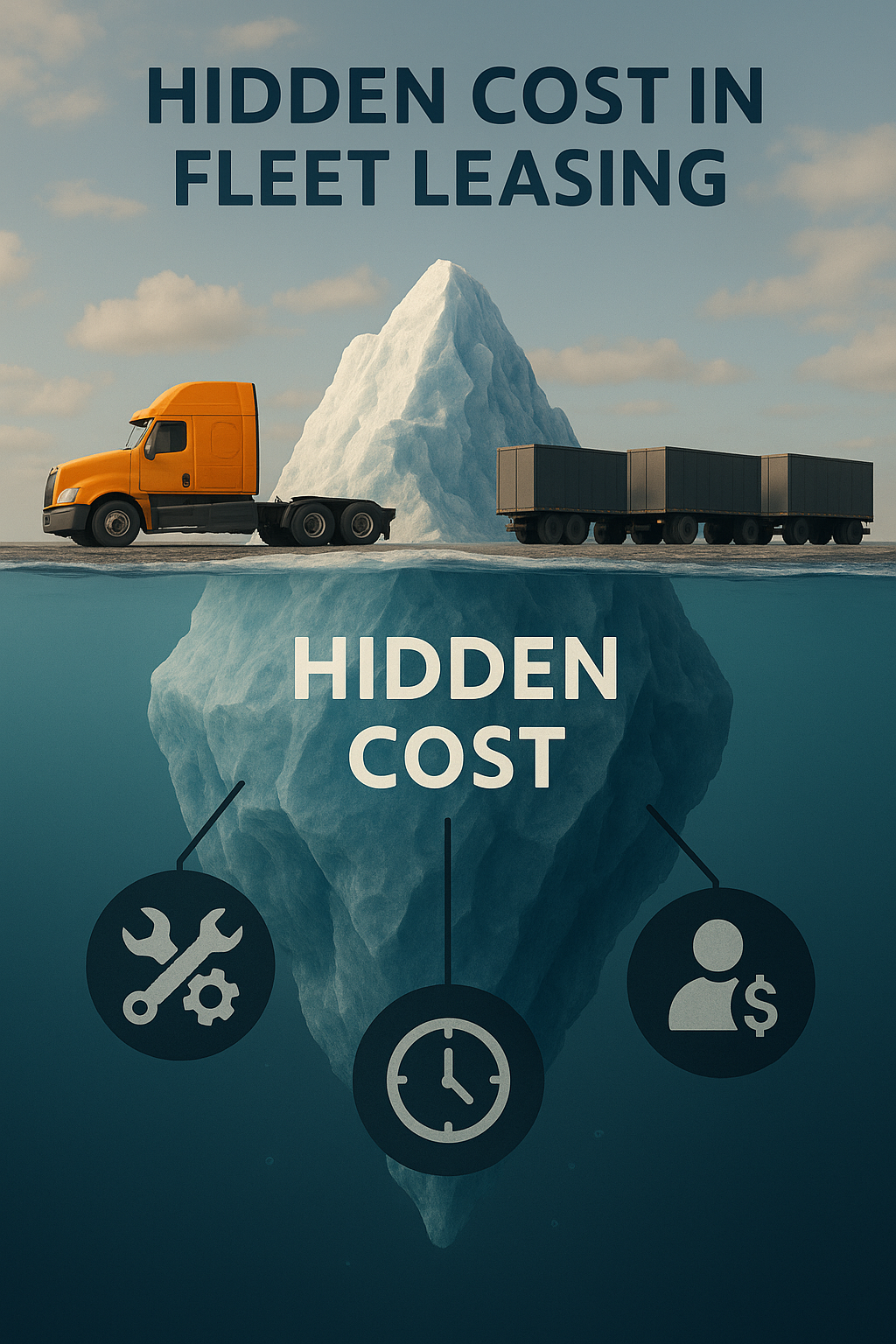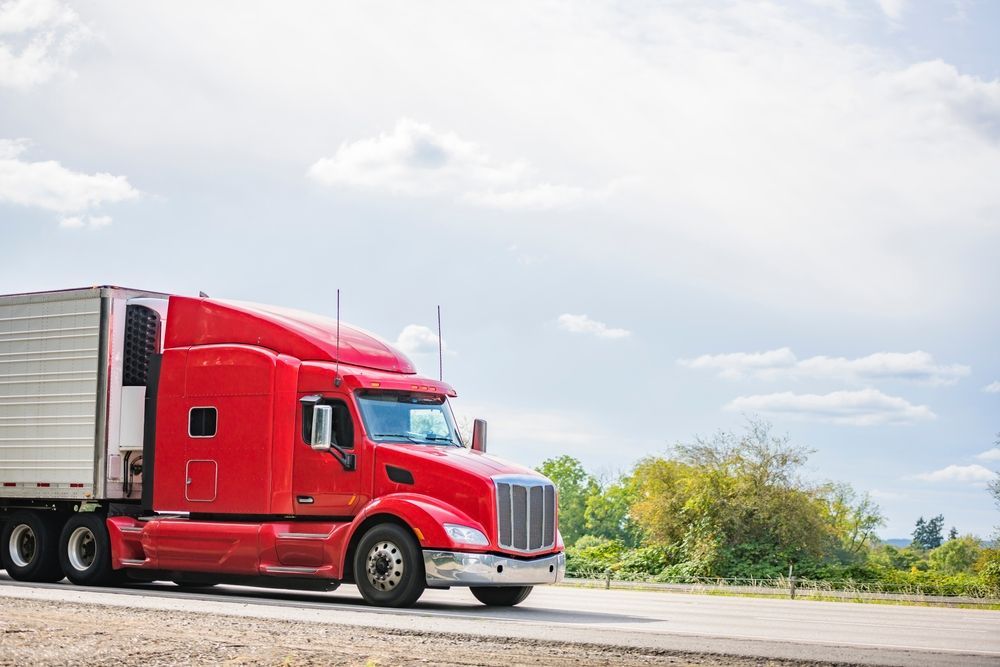Hidden Costs in Fleet Leasing: What Companies Should Know
Share this Article:
Introduction

For many transportation companies, leasing fleets seems like a straightforward solution. Instead of tying up large amounts of capital in vehicle purchases, leasing offers predictable monthly payments, access to newer equipment, and the ability to scale quickly. On paper, it looks clean, simple, and financially sound.
But beneath the surface, leasing can carry a range of hidden costs that erode profitability, restrict flexibility, and introduce unforeseen risks. These costs don’t always appear on the lease contract itself—they emerge in areas like fuel efficiency, compliance, maintenance, downtime, and long-term tax treatment.
This article explores these hidden costs in detail. By the end, you’ll have a clearer understanding of what leasing truly costs and whether it’s the right strategy for your fleet.
The Illusion of Lower Monthly Payments
One of the biggest attractions of leasing is lower monthly payments compared to financing a purchase. At face value, this seems like cost savings. However, the hidden reality is that:
- Payments never stop – At the end of the lease term, unlike ownership, you don’t retain an asset. You must either renew, return, or lease again, locking you into perpetual payments.
- Buyout clauses – If you decide to purchase the vehicle at lease end, buyout costs are often higher than the market value of a comparable used truck.
- Escalation clauses – Many leases include inflation-based adjustments, meaning payments rise over time.
What looks like a low monthly obligation often translates into higher long-term costs than ownership.
Mileage Restrictions and Penalties
Most fleet leases include mileage caps. Exceeding these limits can trigger steep penalties—sometimes charged per mile. For trucking fleets that operate in variable conditions, predicting mileage can be nearly impossible.
- Example: A fleet leasing contract may allow 75,000 miles per year, but an unexpected long-haul contract could push usage higher. The penalty could easily cost thousands per vehicle annually.
- Low mileage isn’t safe either. Some leases penalize underutilization because it reduces the lessor’s resale value.
These mileage penalties create a hidden expense that fleets rarely budget for at the outset.
Maintenance Costs Hidden in “Full-Service Leases”
Leasing companies often offer full-service leases (FSLs), bundling maintenance and repairs into a predictable monthly cost. On paper, this simplifies budgeting—but it also hides inefficiencies:
- Inflated rates – Lessors often mark up service costs, so you pay more than if you managed maintenance internally.
- Vendor lock-in – You’re required to use the lessor’s approved service network, even if downtime is longer or quality is lower.
- Exclusions – “Wear and tear” is subjective. Repairs you assume are covered may later be billed as your responsibility.
In many cases, fleets that self-manage maintenance with trusted shops or in-house teams can achieve better cost control.
Compliance and Regulatory Risks
Leased vehicles don’t absolve you from compliance responsibility. Fleets are still accountable for:
- DOT inspections
- Emissions standards
- IFTA reporting
- Weight restrictions
Some leasing contracts limit modifications, making it harder to retrofit vehicles for new compliance requirements. For example, if California or another state implements stricter emissions standards, your leased trucks may require upgrades—but your contract may prevent them, forcing costly early terminations.
Tax Treatment Complexities
From a tax perspective, leasing can appear attractive because payments are deductible as operating expenses. However, the hidden tax costs can be significant:
- No depreciation benefits – Unlike ownership, you can’t take accelerated depreciation under IRS Section 179 or bonus depreciation.
- Lease accounting rules (ASC 842) – Businesses must now record most leases on their balance sheet, reducing the off-balance-sheet advantage.
- Sales tax on payments – Some states apply sales tax on every monthly payment, compounding costs over the life of the lease.
While leasing offers short-term tax simplicity, ownership often provides more long-term tax advantages.
Loss of Asset Control
When you lease, you don’t truly control your fleet. The lessor dictates:
- Resale terms – At lease-end, you can’t resell or capture equity from well-maintained vehicles.
- Customization limits – Adding auxiliary equipment (reefer units, lift gates, safety tech) may be restricted.
- Usage restrictions – Some leases prohibit cross-border operations or limit where vehicles can be driven.
This loss of control translates into indirect costs—reduced operational flexibility, slower response to market opportunities, and missed resale value.
Downtime and Replacement Costs
Hidden costs aren’t just in money—they’re also in time.
- Breakdowns – If a leased truck breaks down, you must follow the lessor’s process, which can be slower than internal dispatch.
- Replacement delays – Lessors may not have spare vehicles available quickly, forcing costly rental alternatives.
- Productivity impact – Every day of downtime translates into lost loads, unhappy clients, and reduced revenue.
These indirect costs often outweigh the savings of a fixed lease payment.
Insurance and Risk Allocation
Leasing agreements often push additional insurance obligations onto the lessee:
- Higher liability coverage requirements than typical fleet policies.
- Gap insurance may be required to cover the difference between market value and lease obligation if the truck is totaled.
- Forced placement – If you don’t provide proof of coverage, the lessor may assign their own (expensive) policy.
These insurance costs are rarely highlighted during lease negotiations.
Early Termination Penalties
Market conditions change—fuel prices rise, freight volumes shift, or technology advances. If you need to downsize or upgrade, terminating a lease early can be extremely costly.
- Penalties often include paying the remaining balance of the lease.
- Some contracts require payment of residual value losses.
- Early terminations can damage relationships with leasing companies, reducing future flexibility.
Ownership, by contrast, allows you to liquidate assets quickly.
Residual Value Games
Leasing companies make money on residual value assumptions—the projected resale value at lease end.
- If the residual value is set too high, your monthly payments may seem low—but at lease end, you face a massive balloon payment.
- If it’s set too low, your payments are inflated to protect the lessor’s resale margin.
Either way, fleets rarely capture the upside of vehicle value retention.
Technology Obsolescence
Truck technology is advancing quickly—electric drivetrains, telematics, and automation. Leasing may lock you into outdated equipment.
- Example: A 7-year lease on diesel tractors could prevent you from switching to electric when infrastructure improves.
- Retrofitting leased vehicles with advanced safety features may be restricted by the lessor.
This creates opportunity costs—your competitors may adopt newer, more efficient technology sooner.
The Psychological Cost of “Set It and Forget It”
Leasing encourages fleets to become passive about cost control. Monthly payments create a false sense of stability, leading managers to overlook:
- Negotiating better fuel deals
- Investing in driver training for efficiency
- Scheduling preventive maintenance aggressively
This complacency is a hidden cultural cost that compounds financial leakage over years.
Case Study: Hidden Costs in Action
Consider a regional carrier with 50 tractors leased under a full-service agreement.
- Lease payment per tractor: $2,300/month = $1.38M/year
- Mileage overages: $1,200 per truck/year = $60,000/year
- Downtime rentals: $100,000/year
- Insurance add-ons: $75,000/year
- Lost depreciation tax benefits: Equivalent to $150,000/year
In total, the fleet paid nearly $400,000 in hidden costs beyond their lease payments. Ownership could have delivered better long-term ROI.
When Leasing Still Makes Sense
To be fair, leasing isn’t always bad. It works best when:
- Fleets need short-term flexibility (e.g., testing new markets).
- Companies lack capital for upfront purchases.
- Specialized vehicles are needed temporarily.
- Rapid scaling is required without long procurement cycles.
The key is entering leases with eyes wide open—and negotiating aggressively.
How to Avoid Hidden Costs in Fleet Leasing
Before signing any lease, fleets should:
- Run total cost of ownership (TCO) models comparing leasing vs. buying.
- Audit mileage patterns to avoid surprise penalties.
- Negotiate exclusions and maintenance markups in FSLs.
- Plan tax scenarios with your accounting team.
- Scrutinize early termination clauses.
- Retain flexibility by limiting lease terms to 3–4 years.
- Benchmark insurance costs independently.
Conclusion
Leasing can appear attractive, but the true cost often extends far beyond the monthly payment. Hidden charges, lost tax benefits, compliance restrictions, and reduced operational control can quietly drain profitability.
The smartest fleets don’t simply ask, “What’s the monthly payment?” They ask, “What’s the total cost over the next 5–10 years?”
Ownership often provides more control, tax advantages, and long-term savings—but leasing can still play a role when used strategically. By identifying and mitigating hidden costs, transportation companies can make smarter, more profitable decisions for their fleets.
Share with Us:




